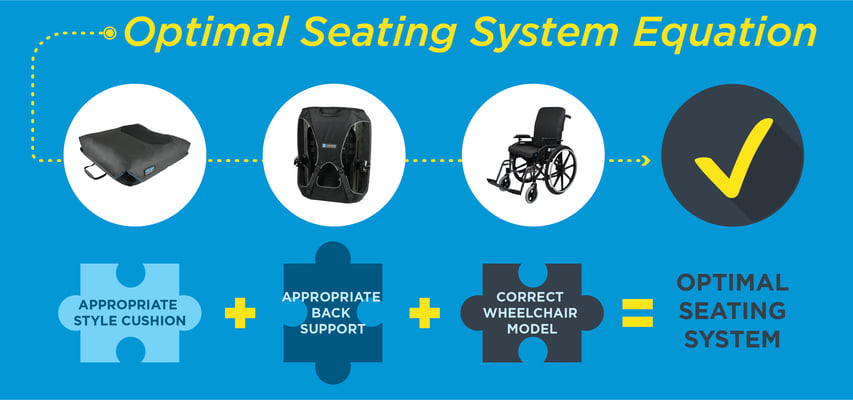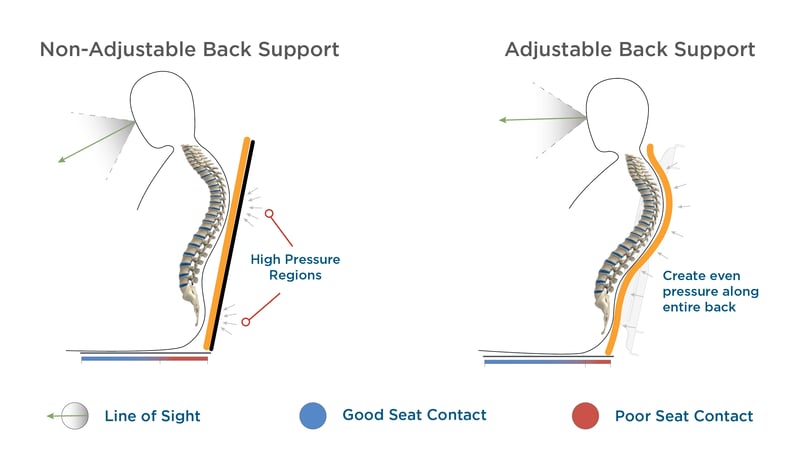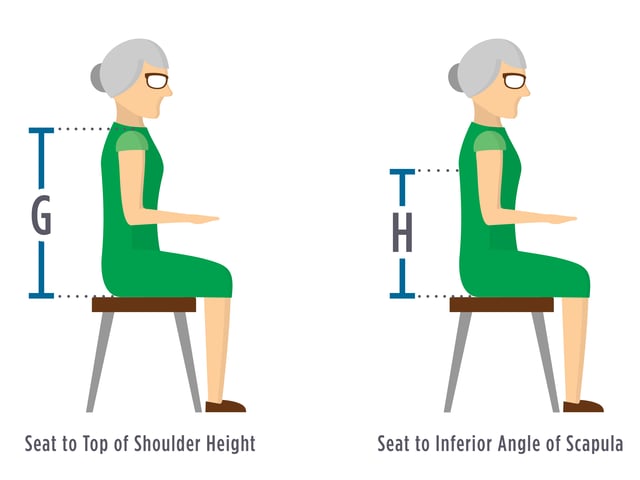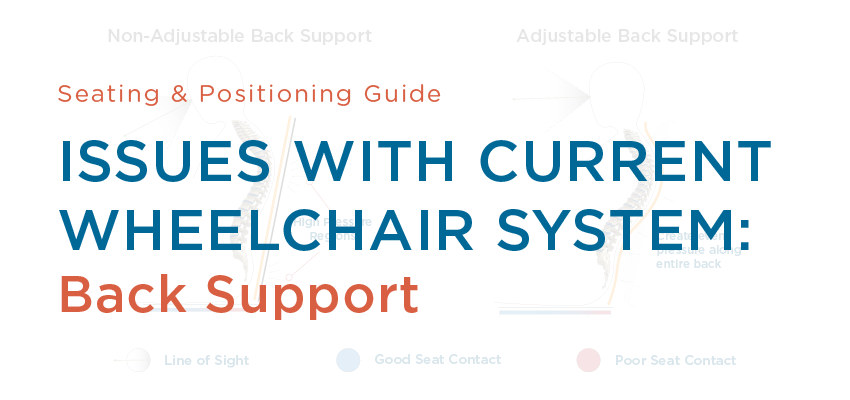Part 11 in our LTC Seating & Positioning series intended to shed some light on the mystery of seating and positioning in the LTC setting. See Part 1, Part 2, Part 3, Part 4, Part 5, Part 6, Part 7, Part 8, Part 9, Part 10. Looking for more information on seating and positioning? Check out our digital, rehab-focused Wheelchair Seating & Positioning Guide here.
I often refer to the optimal seating system as a simple equation: the sum of three factors. This simple equation is:

Despite the simplicity of the equation not everyone understands the critical interplay between all three factors of the equation to:
- Achieve postural stability
- Allow for even pressure redistribution
- Attain optimal postural alignment.
When we leave out one of these pieces of the equation we start to see patients that present with:
- Poor stability in the seating system, increasing the risk of unwanted movement into an abnormal posture or placing them at risk to fall from the wheelchair
- Sliding in the wheelchair, increasing the risk of shear forces
- Uneven pressure redistribution throughout the spine, pelvis, and lower extremities, increasing the risk of peak pressures on bony prominences, setting the patient up for a pressure injury
- Poor alignment of the trunk, pelvis, all extremities, and head, decreasing the ability to perform ADLs as independently and safely as possible from the wheelchair level.
THE ROLE OF THE BACK SUPPORT
All therapists understand fully the importance of a quality cushion, but the critical role of the back support is not as well understood. What is the role of the back support? A quality back support can:
- Immerse and envelop the spine for optimal contact
- Capture the curvature whether normal or abnormal for optimal upright, midline posture
- Allow for even pressure distribution to alleviate peak pressures on the spinous processes
- Allow for the addition of lateral trunk and head supports
- Replace the existing overstretched, hammocking sling back that has lost its shape and can no longer stabilize the trunk as needed
- Provide the ability to adjust seat-to-back angle to alleviate fatigue of the trunk muscles, reduce the sensation of being pushed out of the chair with a straight, non-contoured back support
- Provide the ability to adjust seat-to-back angle to accommodate for ROM loss at the pelvis to assist with proper trunk and pelvic alignment and to bring the pelvis back in the seating system for optimal contact with the back and seat surface.

When choosing appropriate back support height, define your GOAL for the resident:
If positioning is the objective, then measure seat to top of shoulder height (G) to choose a back support that can provide optimal trunk stabilization.
If self-propulsion for a resident with good trunk strength is the goal, measure seat to inferior angle of scapula (H) for increased freedom of movement and access to the wheels.

The charts below break down specific back support issues your resident could be having in relation to incorrect wheelchair back support. An appropriate back support is crucial in aligning the spine, providing pelvic stability, decreasing risk of wound development and pain, and improving function.
|
BACK SUPPORT HEIGHT: TOO LOW
This causes insufficient stability for a resident with poor trunk strength and balance
|
||
| What is going on? | Negative Result | What can you do? |
|
Resident slides down in the chair seeking more surface area for increased stability |
Posterior pelvic tilt with kyphosis of the thoracic spine |
Measure seat to top of shoulder (G) or Seat to inferior angle of scapula (H) Provide an appropriately sized contoured back support for added stability that allows for immersion and envelopment of resident's curvature |
| Resident seeks out one armrest to gain more stability | Pelvic obliquity with scoliosis of the spine |
Measure seat to top of shoulder (G) or Seat to inferior angle of scapula (H) Provide an appropriately sized contoured back support for added stability that allows for immersion and envelopment of resident's curvature |
| Resident rotates spine and pelvis to seek out more stability on one side of the body | Pelvic rotation with rotation of the spine |
Measure seat to top of shoulder (G) or Seat to inferior angle of scapula (H) Provide an appropriately sized contoured back support for added stability that allows for immersion and envelopment of resident's curvature |
|
BACK SUPPOR HEIGHT: TOO HIGH/TOO UPRIGHT
|
||
| What is going on? | Negative Result | What can you do? |
| Resident with poor core strength will slide down to alleviate fatigue | Posterior pelvic tilt with kyphosis of the thoracic spine |
Measure seat to top of shoulder (G) or Seat to inferior angle of scapula (H) Open seat-to-back angle either through back support hardware or by adjusting the back canes in a MWC with that option Provide an appropriately sized contoured back support for added stability that allows for immersion and envelopment of resident's curvature |
| Increased pressure at distal thigh, increasing risk of LE edema, resident slides forward to reduce numbness and pain | Posterior pelvic tilt aka sacral sitting |
Measure seat to top of shoulder (G) or Seat to inferior angle of scapula (H) Open seat-to-back angle either through back support hardware or by adjusting the back canes in a MWC with that option Provide an appropriately sized contoured back support for added stability that allows for immersion and envelopment of resident's curvature |
*Another reason to choose a K0004 MWC is the ability to adjust seat-to-back angle. This helps to alleviated fatigue of the trunk muscles and reduce the sensation of being pushed out of the chair.
We must remember that the trunk is directly impacted by pelvic stability and alignment, and the pelvic position is only as good as the stability and alignment we provide to the trunk. We don’t dress our pelvis and leave our trunk bare, so why would we position our pelvis and leave our trunk without the optimal back support as well? We need to stop purchasing and relying on cushions alone to solve our seating issues and realize that the trunk support is just as critical in an ideal seating system!
Please refer to the Seating and Positioning Guide to see what measurements need to be taken to ensure an accurately fitted wheelchair system!
 Ana Endsjo, MOTR/L, CLT
Ana Endsjo, MOTR/L, CLT
Clinical Education Manager LTC Division
Ana Endsjo has worked as an occupational therapist since 2001 in a variety of treatment settings. She has mainly worked with the geriatric population, dedicated to the betterment of the treatment of the elderly in LTC centers. Her focus has been on seating & positioning and contracture management of the nursing home resident. With this experience, her hope is to guide other therapists, rehab directors, nurses, and administrators through educational guides, blogs, webinars, and live courses in her role as Clinical Education Manager for the long term care division.

